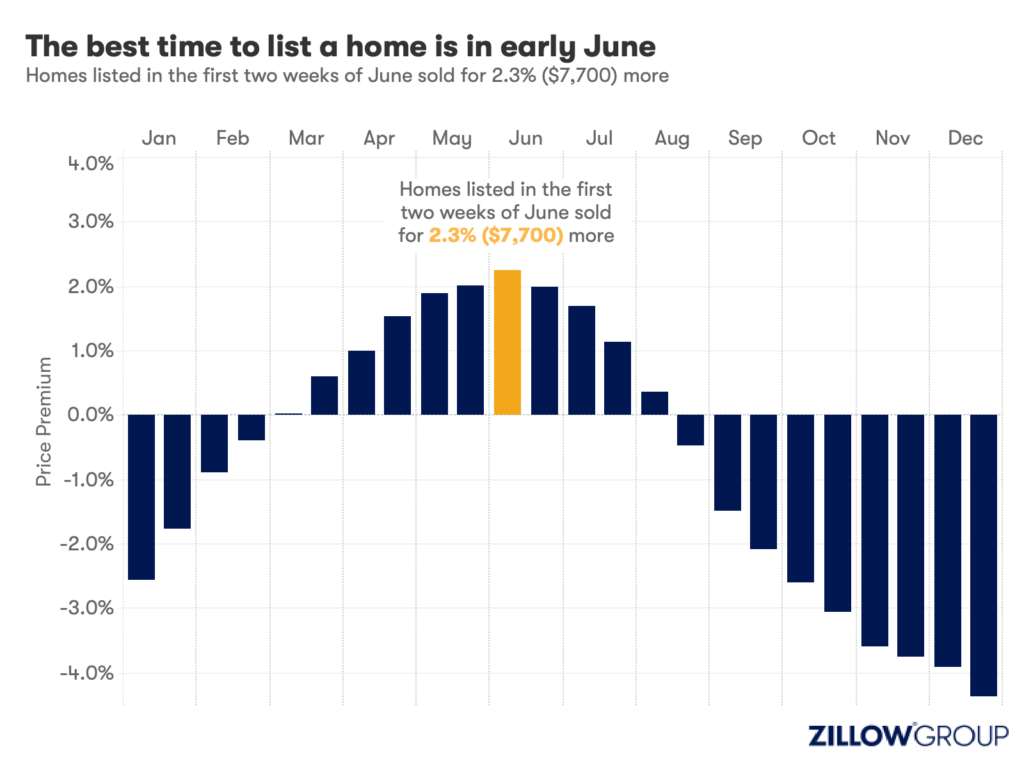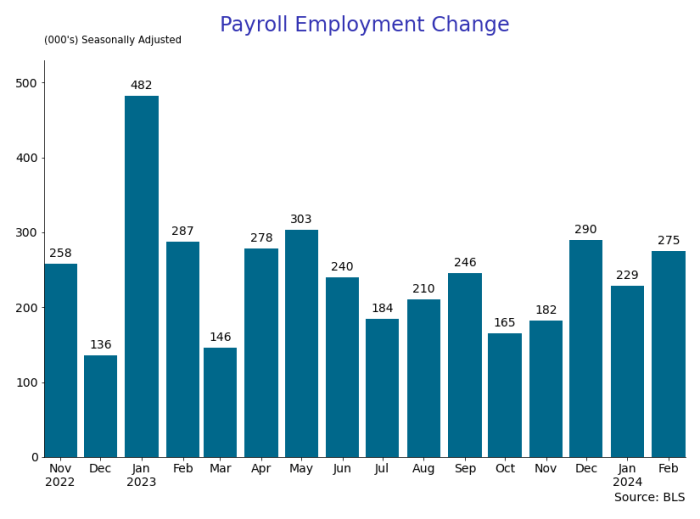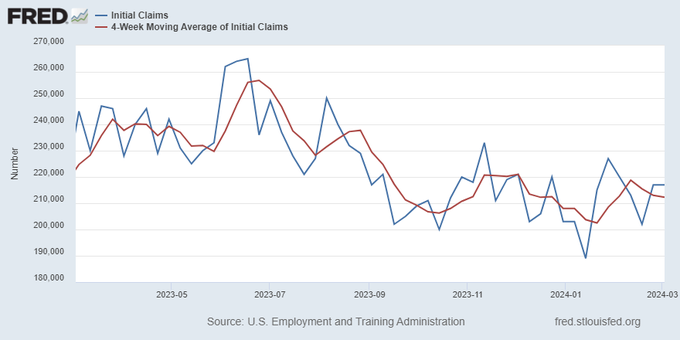Uncategorized
Are NFT markets in a death spiral or ready for a resurgence?
NFTs have taken a massive hit since the 2021 bull market, but some experts say they could make a comeback.
Nonfungible tokens (NFTs)…

NFTs have taken a massive hit since the 2021 bull market, but some experts say they could make a comeback.
Nonfungible tokens (NFTs) saw a massive surge in popularity in 2021, accompanied by sky-high prices, but the market has since come crashing back to earth, and it’s unclear whether there will be a resurgence.
NFTs are unique digital tokens recorded on a blockchain to certify ownership and authenticity. They can’t be copied or substituted but can be transferred and sold by their owner.
According to analytics platform NFTGo, the NFT market cap valued in Ether (ETH) is down 40.59% over the past year at the time of writing, with trading volume down 40.81%.
The market cap in U.S. dollars is down 41.16%, and its volume has dropped 66.77%. At the same time, market sentiment is ranked 13 out of 100, with an overall rating of “cold.”

Arno Bauer, senior solution architect at BNB Chain, told Cointelegraph that from a utility perspective, NFT projects are increasingly adding value and that this growth in functionality is where the future of NFTs likely lies.
Bauer said the NFT market is showing “promising signs of innovation and creativity,” which holds great potential for the growth and evolution of the tech.
Related: Crypto lawyer about SEC: ‘Problematic to imply all NFTs are securities’
“Market sentiment, cultural shifts towards digital ownership, and the potential for NFTs to be integrated into various aspects of our lives also contribute to a positive outlook for the future of NFTs,” he said.
“While current market conditions might seem subdued, the ongoing innovation and potential for integration with both digital and physical worlds suggest that NFTs have not had their day and that their continued relevance and growth are highly probable,” Bauer added.
NFTs in the long term
As for long-term use cases, Bauer said NFTs will “likely evolve” over time and become increasingly linked to real-world assets, such as property ownership or unique physical goods.
Currently, NFTs have been most successful in the art world, with some selling for tens of millions of dollars.

Digital artist Pak sold an NFT project titled “The Merge” for $91.8 million on Nifty Gateway in 2021, while Mike Winkelmann, also known as Beeple, sold “Everydays: The First 5000 Days” for $69.3 million via Christie’s auction house the same year.
Blockchain games also use NFTs to represent in-game items such as weapons and armor, and there is speculation the tech will make the jump to mainstream games. Various types of music assets are also being sold as one-of-a-kind NFTs.
Bauer thinks that as more robust technology provides enhanced use cases and ownership security, NFTs will likely become more attractive to mainstream markets.
He speculated that NFTs could link to financial instruments, representing shares in companies or investment funds, and social achievements, where they could symbolize badges of accomplishment in various fields.

“Beyond art, the ability to tokenize unique assets and provide verifiable ownership will create numerous applications across various domains,” Bauer said.
“Collaborations with traditional industries, technological advancements, clear regulatory frameworks and educational efforts can significantly boost NFT utility and adoption.”
“Addressing sustainability concerns could make them more appealing to a broader audience,” he added.
NFTs have the potential to make a comeback
Jason Bailey, co-founder and CEO of NFT tool and self-custody solution ClubNFT, told Cointelegraph he thinks “NFTs will come back and go mainstream” because crypto and NFTs rebound cyclically, just like previous tech crashes.
According to data gathering platform Statista, the NFT market is projected to continue growing in revenue, users and market capitalization.
As of 2023, there are 13.95 million NFT users, but that’s expected to hit 19.31 million users by 2027.

However, Bailey believes NFTs currently have some issues, most of which were amplified by rampant market speculation, that need to be solved before NFTs can go mainstream.
He said NFTs and the ecosystem around them are so complex that almost everyone is still vulnerable to many risks they may not even know about.
“Many of us have been trying to educate and onboard people into the space thoughtfully so they can be safe, but the truth is that NFTs won’t go mainstream until the complexity is replaced with a safe-by-default easy path,” Bailey said.
“For example, the vast majority of people don’t realize that an NFT is almost always at risk in a sense, except for fully on-chain NFTs, which are a truly tiny fraction.”
“The steps needed to protect the art from disappearing, and prevent the NFT from breaking, are complicated, time-consuming and error-prone,” he added.
Related: AI-based tools bring security and transparency to the NFT market
Bailey believes that in the long term, NFTs or similar tech could prove invaluable in validating digital documents such as marriage certificates, diplomas and licenses.
Overall, he thinks NFTs solve too many of the current problems associated with digital ownership — including scarcity, authentication, provenance and provable ownership — to be ignored.
“We need to build infrastructure now, during the bear market, for smoother onboarding and to protect NFT adopters from malicious actors in the next NFT bull market,” he said.
“Once these issues are solved, NFTs will absolutely go mainstream because the train of digital ownership left the station decades ago, and there is no stopping it.”
Meaningful projects could be a game changer for NFTs
Speaking to Cointelegraph, Andy Ku, founder and CEO of digital content Web3 ecosystem Altava Group, said he thinks the previous highs in the NFT market were based on a hype cycle, so it’ll be hard for an individual NFT to reach such lofty heights again.
asked google bard to write me some tweets about NFT market right now...
— beeple (@beeple) August 22, 2023
mf really went for the throat on these... pic.twitter.com/aLjUbwH3gT
According to CoinGecko, many of the top NFT collections have seen significant drops in value over the past year.
At the time of writing, Bored Ape Yacht Club has fallen by 67.1%, CryptoPunks by 33.2%, Mutant Ape Yacht Club by 59.2% and Azuki by 49.3%.
Ku believes that if we can see more meaningful NFT projects on the market offering tangible benefits to more people, then it’s possible to have the combined volume bring the overall market value up.
Related: What’s next for NFTs and Web3 in the age of the creator economy?
“NFTs should offer value and utility beyond just a digital art or PFP. The two areas I particularly believe in are asset-backed NFTs and a membership NFT,” he said.
“NFT’s core value of being an immutable representation of something is a great fit for assets and membership.”
NFTs for subscription, membership-based models and loyalty programs are starting to gain traction, with examples in hospitality venues and gyms already on the market.
“In terms of asset-backed NFTs, master artworks, real estate and precious metals like gold are all good examples of assets in which people believe,” Ku said.
“NFTs would make a great proof-of-ownership for these assets as well as being extremely portable,” he added.
blockchain crypto link bnb real estate crypto goldUncategorized
Homes listed for sale in early June sell for $7,700 more
New Zillow research suggests the spring home shopping season may see a second wave this summer if mortgage rates fall
The post Homes listed for sale in…

- A Zillow analysis of 2023 home sales finds homes listed in the first two weeks of June sold for 2.3% more.
- The best time to list a home for sale is a month later than it was in 2019, likely driven by mortgage rates.
- The best time to list can be as early as the second half of February in San Francisco, and as late as the first half of July in New York and Philadelphia.
Spring home sellers looking to maximize their sale price may want to wait it out and list their home for sale in the first half of June. A new Zillow® analysis of 2023 sales found that homes listed in the first two weeks of June sold for 2.3% more, a $7,700 boost on a typical U.S. home.
The best time to list consistently had been early May in the years leading up to the pandemic. The shift to June suggests mortgage rates are strongly influencing demand on top of the usual seasonality that brings buyers to the market in the spring. This home-shopping season is poised to follow a similar pattern as that in 2023, with the potential for a second wave if the Federal Reserve lowers interest rates midyear or later.
The 2.3% sale price premium registered last June followed the first spring in more than 15 years with mortgage rates over 6% on a 30-year fixed-rate loan. The high rates put home buyers on the back foot, and as rates continued upward through May, they were still reassessing and less likely to bid boldly. In June, however, rates pulled back a little from 6.79% to 6.67%, which likely presented an opportunity for determined buyers heading into summer. More buyers understood their market position and could afford to transact, boosting competition and sale prices.
The old logic was that sellers could earn a premium by listing in late spring, when search activity hit its peak. Now, with persistently low inventory, mortgage rate fluctuations make their own seasonality. First-time home buyers who are on the edge of qualifying for a home loan may dip in and out of the market, depending on what’s happening with rates. It is almost certain the Federal Reserve will push back any interest-rate cuts to mid-2024 at the earliest. If mortgage rates follow, that could bring another surge of buyers later this year.
Mortgage rates have been impacting affordability and sale prices since they began rising rapidly two years ago. In 2022, sellers nationwide saw the highest sale premium when they listed their home in late March, right before rates barreled past 5% and continued climbing.
Zillow’s research finds the best time to list can vary widely by metropolitan area. In 2023, it was as early as the second half of February in San Francisco, and as late as the first half of July in New York. Thirty of the top 35 largest metro areas saw for-sale listings command the highest sale prices between May and early July last year.
Zillow also found a wide range in the sale price premiums associated with homes listed during those peak periods. At the hottest time of the year in San Jose, homes sold for 5.5% more, a $88,000 boost on a typical home. Meanwhile, homes in San Antonio sold for 1.9% more during that same time period.
| Metropolitan Area | Best Time to List | Price Premium | Dollar Boost |
| United States | First half of June | 2.3% | $7,700 |
| New York, NY | First half of July | 2.4% | $15,500 |
| Los Angeles, CA | First half of May | 4.1% | $39,300 |
| Chicago, IL | First half of June | 2.8% | $8,800 |
| Dallas, TX | First half of June | 2.5% | $9,200 |
| Houston, TX | Second half of April | 2.0% | $6,200 |
| Washington, DC | Second half of June | 2.2% | $12,700 |
| Philadelphia, PA | First half of July | 2.4% | $8,200 |
| Miami, FL | First half of June | 2.3% | $12,900 |
| Atlanta, GA | Second half of June | 2.3% | $8,700 |
| Boston, MA | Second half of May | 3.5% | $23,600 |
| Phoenix, AZ | First half of June | 3.2% | $14,700 |
| San Francisco, CA | Second half of February | 4.2% | $50,300 |
| Riverside, CA | First half of May | 2.7% | $15,600 |
| Detroit, MI | First half of July | 3.3% | $7,900 |
| Seattle, WA | First half of June | 4.3% | $31,500 |
| Minneapolis, MN | Second half of May | 3.7% | $13,400 |
| San Diego, CA | Second half of April | 3.1% | $29,600 |
| Tampa, FL | Second half of June | 2.1% | $8,000 |
| Denver, CO | Second half of May | 2.9% | $16,900 |
| Baltimore, MD | First half of July | 2.2% | $8,200 |
| St. Louis, MO | First half of June | 2.9% | $7,000 |
| Orlando, FL | First half of June | 2.2% | $8,700 |
| Charlotte, NC | Second half of May | 3.0% | $11,000 |
| San Antonio, TX | First half of June | 1.9% | $5,400 |
| Portland, OR | Second half of April | 2.6% | $14,300 |
| Sacramento, CA | First half of June | 3.2% | $17,900 |
| Pittsburgh, PA | Second half of June | 2.3% | $4,700 |
| Cincinnati, OH | Second half of April | 2.7% | $7,500 |
| Austin, TX | Second half of May | 2.8% | $12,600 |
| Las Vegas, NV | First half of June | 3.4% | $14,600 |
| Kansas City, MO | Second half of May | 2.5% | $7,300 |
| Columbus, OH | Second half of June | 3.3% | $10,400 |
| Indianapolis, IN | First half of July | 3.0% | $8,100 |
| Cleveland, OH | First half of July | 3.4% | $7,400 |
| San Jose, CA | First half of June | 5.5% | $88,400 |
The post Homes listed for sale in early June sell for $7,700 more appeared first on Zillow Research.
federal reserve pandemic home sales mortgage rates interest ratesUncategorized
February Employment Situation
By Paul Gomme and Peter Rupert The establishment data from the BLS showed a 275,000 increase in payroll employment for February, outpacing the 230,000…

By Paul Gomme and Peter Rupert
The establishment data from the BLS showed a 275,000 increase in payroll employment for February, outpacing the 230,000 average over the previous 12 months. The payroll data for January and December were revised down by a total of 167,000. The private sector added 223,000 new jobs, the largest gain since May of last year.

Temporary help services employment continues a steep decline after a sharp post-pandemic rise.


Average hours of work increased from 34.2 to 34.3. The increase, along with the 223,000 private employment increase led to a hefty increase in total hours of 5.6% at an annualized rate, also the largest increase since May of last year.

The establishment report, once again, beat “expectations;” the WSJ survey of economists was 198,000. Other than the downward revisions, mentioned above, another bit of negative news was a smallish increase in wage growth, from $34.52 to $34.57.

The household survey shows that the labor force increased 150,000, a drop in employment of 184,000 and an increase in the number of unemployed persons of 334,000. The labor force participation rate held steady at 62.5, the employment to population ratio decreased from 60.2 to 60.1 and the unemployment rate increased from 3.66 to 3.86. Remember that the unemployment rate is the number of unemployed relative to the labor force (the number employed plus the number unemployed). Consequently, the unemployment rate can go up if the number of unemployed rises holding fixed the labor force, or if the labor force shrinks holding the number unemployed unchanged. An increase in the unemployment rate is not necessarily a bad thing: it may reflect a strong labor market drawing “marginally attached” individuals from outside the labor force. Indeed, there was a 96,000 decline in those workers.


Earlier in the week, the BLS announced JOLTS (Job Openings and Labor Turnover Survey) data for January. There isn’t much to report here as the job openings changed little at 8.9 million, the number of hires and total separations were little changed at 5.7 million and 5.3 million, respectively.

As has been the case for the last couple of years, the number of job openings remains higher than the number of unemployed persons.

Also earlier in the week the BLS announced that productivity increased 3.2% in the 4th quarter with output rising 3.5% and hours of work rising 0.3%.

The bottom line is that the labor market continues its surprisingly (to some) strong performance, once again proving stronger than many had expected. This strength makes it difficult to justify any interest rate cuts soon, particularly given the recent inflation spike.
unemployment pandemic unemploymentUncategorized
Mortgage rates fall as labor market normalizes
Jobless claims show an expanding economy. We will only be in a recession once jobless claims exceed 323,000 on a four-week moving average.

Everyone was waiting to see if this week’s jobs report would send mortgage rates higher, which is what happened last month. Instead, the 10-year yield had a muted response after the headline number beat estimates, but we have negative job revisions from previous months. The Federal Reserve’s fear of wage growth spiraling out of control hasn’t materialized for over two years now and the unemployment rate ticked up to 3.9%. For now, we can say the labor market isn’t tight anymore, but it’s also not breaking.
The key labor data line in this expansion is the weekly jobless claims report. Jobless claims show an expanding economy that has not lost jobs yet. We will only be in a recession once jobless claims exceed 323,000 on a four-week moving average.
From the Fed: In the week ended March 2, initial claims for unemployment insurance benefits were flat, at 217,000. The four-week moving average declined slightly by 750, to 212,250
Below is an explanation of how we got here with the labor market, which all started during COVID-19.
1. I wrote the COVID-19 recovery model on April 7, 2020, and retired it on Dec. 9, 2020. By that time, the upfront recovery phase was done, and I needed to model out when we would get the jobs lost back.
2. Early in the labor market recovery, when we saw weaker job reports, I doubled and tripled down on my assertion that job openings would get to 10 million in this recovery. Job openings rose as high as to 12 million and are currently over 9 million. Even with the massive miss on a job report in May 2021, I didn’t waver.
Currently, the jobs openings, quit percentage and hires data are below pre-COVID-19 levels, which means the labor market isn’t as tight as it once was, and this is why the employment cost index has been slowing data to move along the quits percentage.

3. I wrote that we should get back all the jobs lost to COVID-19 by September of 2022. At the time this would be a speedy labor market recovery, and it happened on schedule, too
Total employment data
4. This is the key one for right now: If COVID-19 hadn’t happened, we would have between 157 million and 159 million jobs today, which would have been in line with the job growth rate in February 2020. Today, we are at 157,808,000. This is important because job growth should be cooling down now. We are more in line with where the labor market should be when averaging 140K-165K monthly. So for now, the fact that we aren’t trending between 140K-165K means we still have a bit more recovery kick left before we get down to those levels.

From BLS: Total nonfarm payroll employment rose by 275,000 in February, and the unemployment rate increased to 3.9 percent, the U.S. Bureau of Labor Statistics reported today. Job gains occurred in health care, in government, in food services and drinking places, in social assistance, and in transportation and warehousing.
Here are the jobs that were created and lost in the previous month:

In this jobs report, the unemployment rate for education levels looks like this:
- Less than a high school diploma: 6.1%
- High school graduate and no college: 4.2%
- Some college or associate degree: 3.1%
- Bachelor’s degree or higher: 2.2%

Today’s report has continued the trend of the labor data beating my expectations, only because I am looking for the jobs data to slow down to a level of 140K-165K, which hasn’t happened yet. I wouldn’t categorize the labor market as being tight anymore because of the quits ratio and the hires data in the job openings report. This also shows itself in the employment cost index as well. These are key data lines for the Fed and the reason we are going to see three rate cuts this year.
recession unemployment covid-19 fed federal reserve mortgage rates recession recovery unemployment-

 Uncategorized3 weeks ago
Uncategorized3 weeks agoAll Of The Elements Are In Place For An Economic Crisis Of Staggering Proportions
-

 Uncategorized1 month ago
Uncategorized1 month agoCathie Wood sells a major tech stock (again)
-

 Uncategorized3 weeks ago
Uncategorized3 weeks agoCalifornia Counties Could Be Forced To Pay $300 Million To Cover COVID-Era Program
-

 Uncategorized2 weeks ago
Uncategorized2 weeks agoApparel Retailer Express Moving Toward Bankruptcy
-

 Uncategorized4 weeks ago
Uncategorized4 weeks agoIndustrial Production Decreased 0.1% in January
-

 International3 days ago
International3 days agoWalmart launches clever answer to Target’s new membership program
-

 International3 days ago
International3 days agoEyePoint poaches medical chief from Apellis; Sandoz CFO, longtime BioNTech exec to retire
-

 Uncategorized3 weeks ago
Uncategorized3 weeks agoRFK Jr: The Wuhan Cover-Up & The Rise Of The Biowarfare-Industrial Complex





